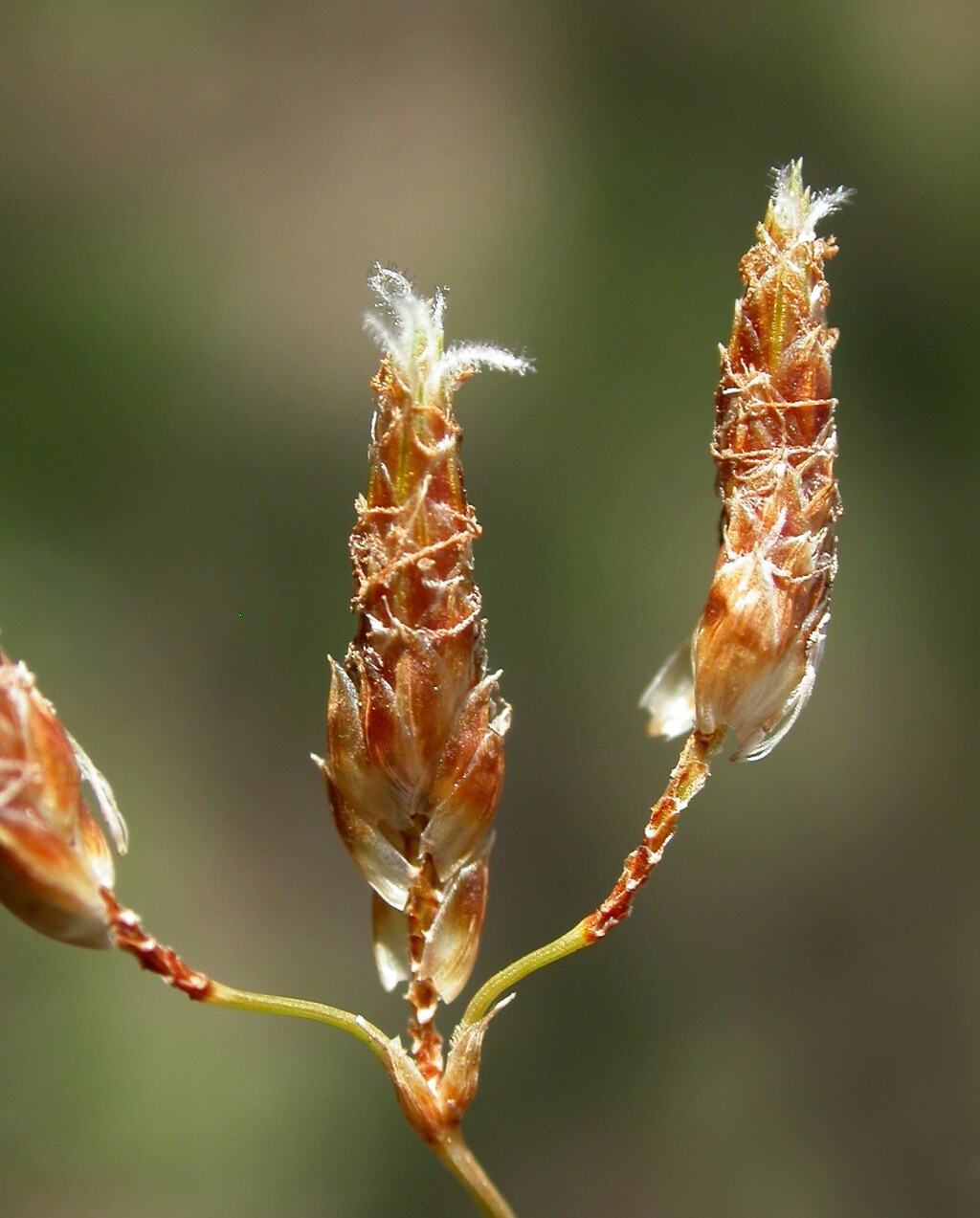Fimbristylis
Annuals, or perennial herbs with short rhizome. Culms usually tufted, ± angular or subterete, striate or grooved. Leaves all basal, or also a few on lower part of culms, occasionally reduced to short-bladed sheaths; ligule a fringe of hairs, or membranous, or absent; inflorescence terminal (very rarely pseudolateral), simple or compound, or headlike, or consisting of a single spikelet; involucral bracts usually leaf-like. Spikelets solitary or in clusters, terete, angular, or strongly flattened, few- to many-flowered; rachilla usually persistent, often winged, rarely spikelets falling off as a whole; glumes spirally arranged (Victorian species) or rarely distichous, up to 6 lower ones empty; flowers bisexual; hypogynous bristles absent; stamens 1–3; style 2–3-fid, with base usually thickened, deciduous, ciliate or glabrous. Nut trigonous or lenticular.
About 300 species world-wide, in tropical and warm temperate regions; 87 species in Australia, occurring in all mainland States.
Wilson, K.L. (1994). Cyperaceae. In: Walsh, N.G.; Entwisle, T.J., Flora of Victoria Vol. 2, Ferns and Allied Plants, Conifers and Monocotyledons, pp. 238–356. Inkata Press, Melbourne.
 Spinning
Spinning


